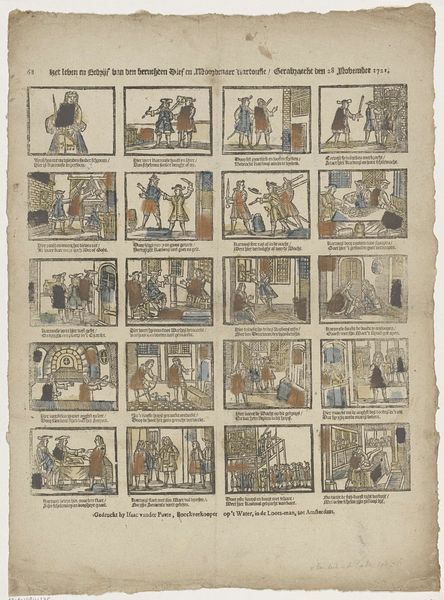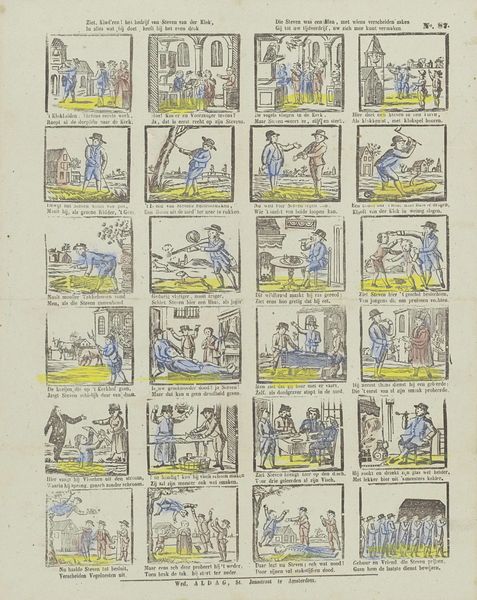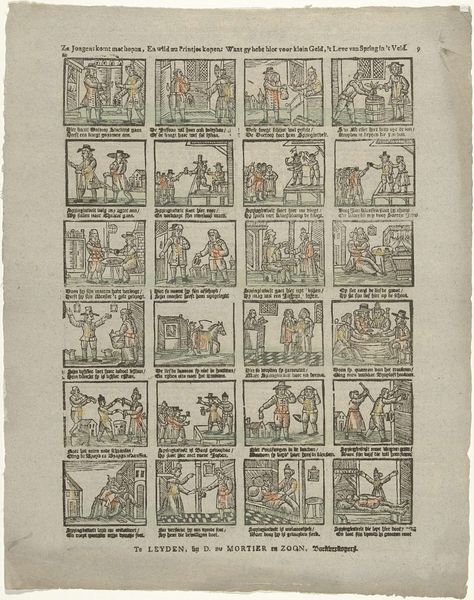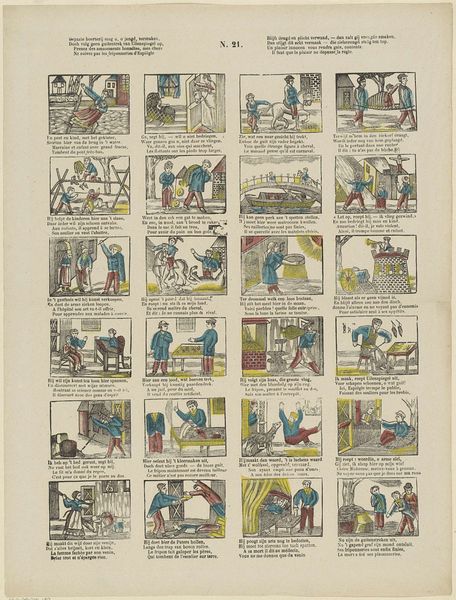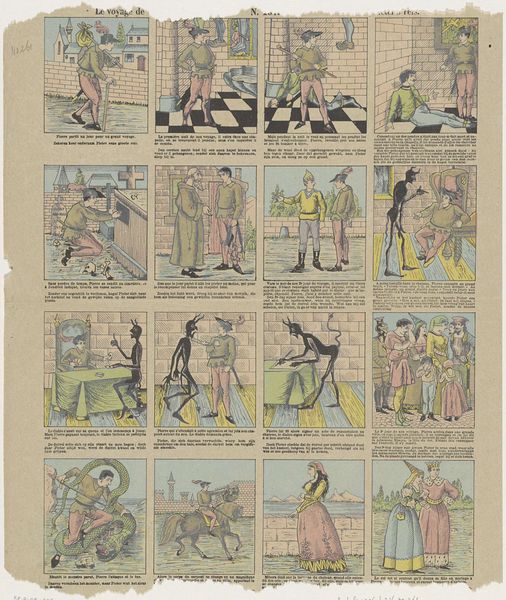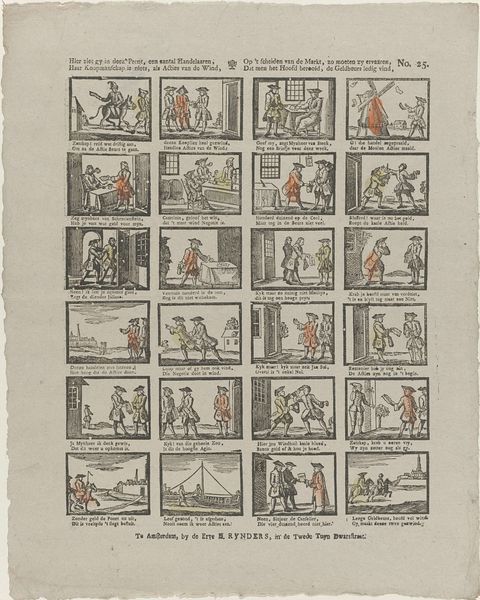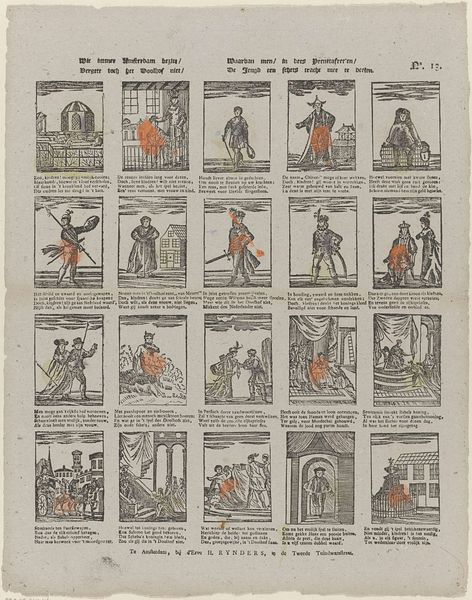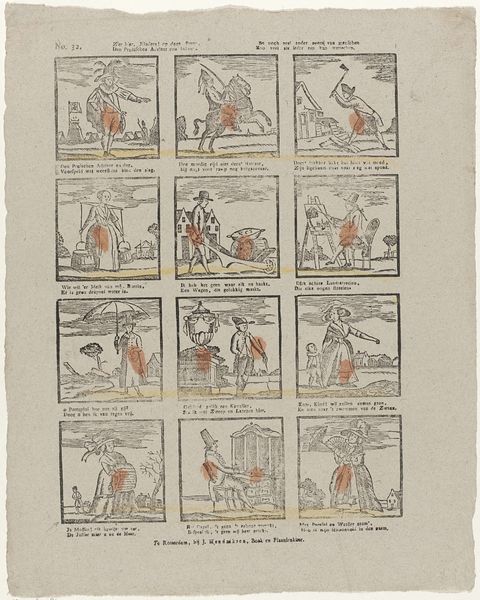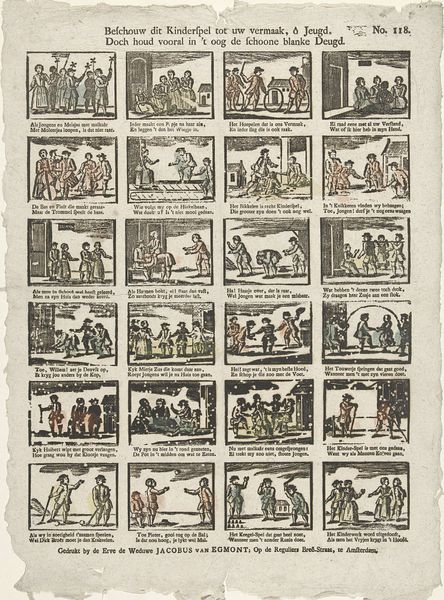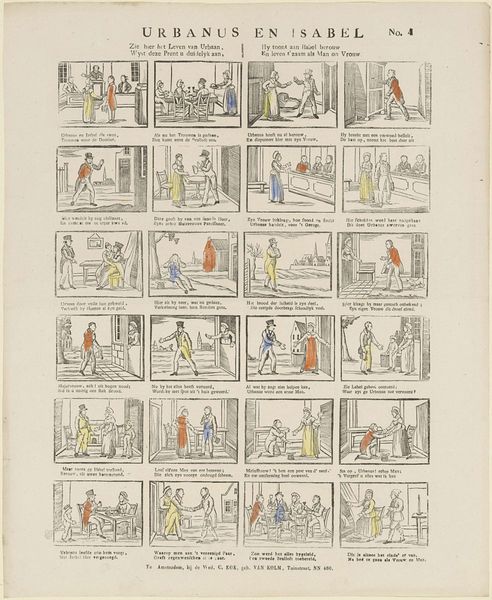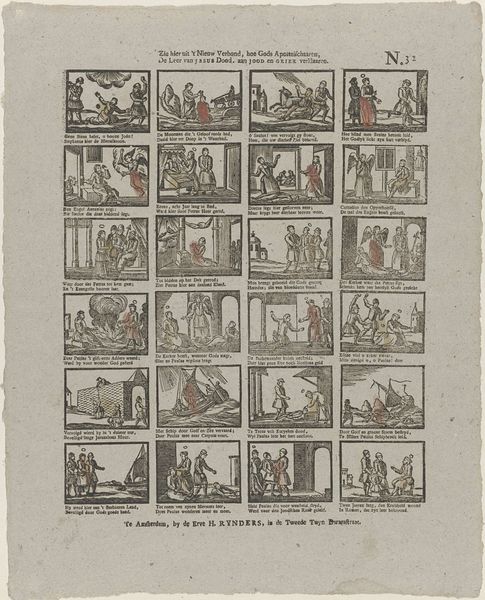
Komt, kindertjes komt hier, wilt doctor Steven kijken, / Met zijn knecht Spring in 't Veld, gij zag nooit zijns gelijken 1850 - 1870
0:00
0:00
print, engraving
#
narrative-art
# print
#
comic
#
genre-painting
#
engraving
Dimensions: height 380 mm, width 294 mm
Copyright: Rijks Museum: Open Domain
Curator: The material conditions surrounding printmaking during the mid-19th century really enabled a flourishing of accessible art forms, don’t you think? Editor: We’re looking at "Komt, kindertjes komt hier, wilt doctor Steven kijken, / Met zijn knecht Spring in 't Veld, gij zag nooit zijns gelijken" made between 1850 and 1870 by Hermanus Numan, currently at the Rijksmuseum. It’s an engraving that reads as a comic strip, but something about the scratchy lines makes me feel like the story might have a dark undercurrent. How do you read this work? Curator: I read this as a fascinating example of the democratization of imagery through printmaking. Engravings like this allowed stories and social commentaries to reach a much broader audience than traditional paintings ever could. The cheap paper, the reproducible nature – these factors drastically altered the consumption and understanding of art. Notice the uniformity of the lines, the lack of detail. This isn’t about aesthetic refinement; it’s about efficient production and dissemination. Editor: So the medium itself dictated the style and content to some extent? Because it's such a different approach to storytelling. Curator: Absolutely. Think about the workshops that produced these. We can speculate on the division of labor. What kind of apprentices or artisans were producing the prints in vast quantities? Considering all those social elements opens new dialogues. The relatively low production values weren't about a lack of skill, but a change in its cultural meaning, of reaching a mass public. Editor: That's really fascinating. I’d never considered the labor aspect so directly influencing how these stories were told and how they were shared. Curator: Considering materials changes the lens in which to read it through, allowing for a greater awareness of access and dissemination. It’s more than just aesthetics.
Comments
No comments
Be the first to comment and join the conversation on the ultimate creative platform.
